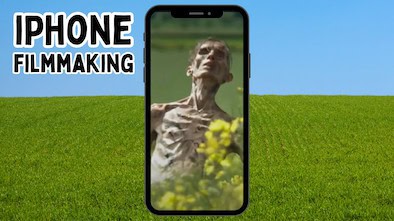
This post is sponsored.
This iPhone filmmaking article was written by David Ansell, Head of eCommerce at 4gadgets
With the release of 28 Years Later, which was largely shot on an iPhone 15 Pro Max, the idea of smartphone filmmaking is gaining traction. What was once just a fun experiment is now a bona fide filmmaking tool, reshaping the future of cinema. So, is the iPhone the new go-to for filmmakers, or is this just another fleeting trend?
The Rise of Smartphone Filmmaking
It all started as a curiosity, but it didn’t take long to prove the iPhone was more than just a novelty for filmmakers. The 2012 documentary Searching for Sugar Man, about two fans tracking down folk singer Sixto Rodriguez, was one of the earliest examples of using an iPhone for shooting. The filmmakers had to turn to an iPhone 5s after running out of cash for traditional Super 8 film.
Then came Sean Baker’s Tangerine (2015), shot entirely on an iPhone 5s, providing a breakthrough for smartphone filmmaking, following critical acclaim.
And let’s not forget Steven Soderbergh, who shot Unsane (2018) on an iPhone 7 and followed up with High Flying Bird (2019). Commenting on the process of shooting with an iPhone, Soderbergh described it as ‘liberating’, thanks to its portability, flexibility and ability to capture natural performances.
But now, with 28 Years Later, we’re talking about blockbuster territory. This is no longer a hobbyist’s tool, but a legitimate contender in filmmaking.
Creative Freedom at Your Fingertips
The iPhone 15 Pro Max used in 28 Years Later comes with some serious tech: a 45MP camera, ProRAW support and a cinematic mode that puts traditional cameras to shame, and it’s small enough to fit in your pocket.
But it’s not just about having a camera on your phone. The A17 Pro chip handles everything from high-end video processing to real-time editing. It’s like carrying a fully loaded film studio, ready to roll anytime, anywhere.
With this affordable and portable gear, indie filmmakers and emerging talent can leave expensive setups behind and start creating professional-level films at a fraction of the cost.
Sustainable Filmmaking
As iPhone filmmaking becomes more accessible, buying a refurbished iPhone provides an eco-friendly solution by reducing e-waste. You can grab a refurbished iPhone, save a ton of money, and still get the same camera power and editing tools that make iPhone filmmaking so awesome.
Not everyone can afford a brand-new iPhone, but refurbished devices pack the same punch for a fraction of the price. It’s the perfect solution for filmmakers who want to make stunning content without draining their bank balance.
The Democratisation of Filmmaking
iPhone filmmaking gives more people a chance to tell their stories by making high-quality video production accessible to a wider range of creators, including independent filmmakers, emerging talent and underrepresented communities. This shift is paving the way for more diverse and inclusive narratives to take centre stage, reshaping what stories are told and who gets to tell them.
What’s Next for iPhone Filmmaking?
As the iPhone continues to evolve, its place in mainstream cinema will only grow. Filmmakers are embracing this technology as a new way of creating, editing and distributing films.
The rise of digital platforms means filmmakers using iPhones can take full control over how their work reaches its audience. That’s a level of freedom that’s never existed before.
In the end, iPhone filmmaking isn’t just a trend, it’s a cultural shift. With a device that fits in your pocket, anyone can create the next big thing. The future of cinema isn’t just in the hands of big studios – it’s in the hands of anyone with a story to tell and a phone to shoot it on.



